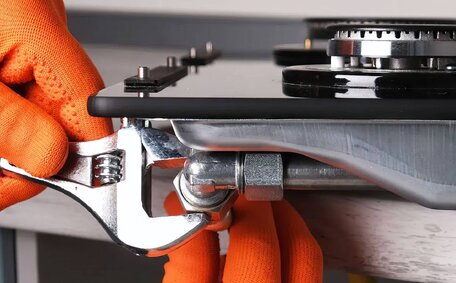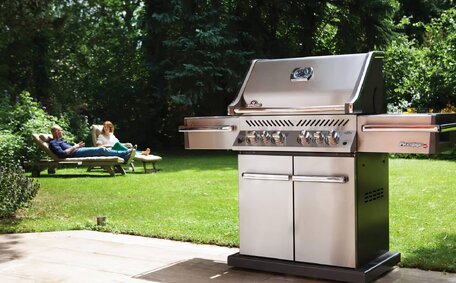What are the common causes of a leaky toilet?
A leaking toilet can be a significant issue, often associated with bothersome noises. Routine inspections and replacing worn parts can help prevent constantly running leaks.
Over time, internal components like the flapper or flush valve can become cracked or worn out, leading to leaks. A misaligned toilet wax ring between the bowl and drain pipe can also allow water to escape.
Specific causes include:
- A faulty, misaligned or worn out flapper valve that fails to make a tight seal, allowing water to continuously leak from the tank into the overflow tube and into the bowl
- Cracks or defects around the base of the overflow tube, allowing water to trickle out
- A compromised or misaligned wax ring, which can allow water to seep into overflow pathways causing leaks at the base of the toilet seat
- Cracks in the toilet tank or bowl
Promptly addressing leaks is critical to prevent water wastage and potential damage.
How to diagnose the source of your toilet leak
To accurately diagnose a leak in your toilet tank, here are some troubleshooting steps:
- Do a visual inspection of the tank, bowl, and toilet base for any visible cracks or damage that could be causing leaks.
- Listen for noises like gushing or dripping during and after flushing, as these can indicate a leak.
- Flush the toilet several times, focusing on different areas each time:
- The tank - look for water seeping through cracks or a compromised seal around the overflow tube, where the float ball controls the water level.
- The bowl - scrutinise the seals around the fill flush valve or the drainage aperture for signs of a compromised toilet fill.
- The base - examine the floor around the base again for any growing puddle.
- Use food colouring to detect hard-to-find tank leaks, especially around the toilet fill valve where the water level drops quickly. Place coloured water in the tank, wait 10 minutes, and note when toilet is flushed, check if colour seeps into toilet bowl, indicating flow from tank to bowl.
- Inspect tank components for issues - check the flapper seal, float cup mechanism, fill valve and their connections for abnormalities.
- If the source of the leak remains unclear, Call a plumber who can provide additional diagnostic assistance if the issue eludes you.
Regular inspections of toilet components, particularly when worn, can reduce water wastage, prevent potential damage, and aid in understanding toilet repairs.
Fixing a leaky toilet flapper
If your toilet flapper is faulty and leaking, follow these steps to replace it:
- Firstly, turn off the water supply to the toilet using the shutoff valve to halt tank refilling during the repair.
- Turn off water flow, flush the toilet to drain the tank and ensure the refill tube is functioning correctly. Use a sponge to soak up any remaining water.
- Remove the old flapper to inspect the valve seal before you Install a new flapper. It may be attached to a chain connected to the toilet handle or mounted to the overflow tube.
- Inspect and clean out the flush valve seat at the bottom of the tank for any buildup, debris or damage. Clean if needed.
- You’ll need to purchase a matching replacement flapper for your toilet model and measures approximately 2 inches larger diameter than the flush valve opening.
- Follow the manufacturer’s instructions to connect the new flapper chain and mount the flapper to the overflow tube or flush valve.
- Turn the water back on and when the fill valve allows the tank to refill, check for leaks once the tank fills with the new flapper seal.
- Regularly flush the toilet to ensure the new flapper operates correctly.
Replacing a worn toilet flapper prevents water from continuously leaking into the bowl, saving water over time. Consider replacing your toilet flapper every 2 years as a maintenance routine.
Fixing a leaky toilet tank
A leaky hot water tank can result from cracked or worn components, loose fittings or sediment buildup preventing proper seals. Here are the steps to diagnose and repair a water leak in your toilet tank:
- Turn off the supply line behind or near the toilet.
- Firstly, turn off the supply valve, flush the toilet to empty the tank, then use a sponge to absorb any residual water.
- After turning off the water supply, remove the tank lid by unscrewing the lock nut and set it aside. Inspect the components inside the tank, gaskets, washers, bolts, fittings, fill valve and flapper for cracks, wear or mineral deposits.
- Tighten any loose tank bolts or fittings. Ensure bolts have rubber washers to prevent leaks.
- Clean or replace damaged gaskets and fittings. Apply tank sealant compound if necessary.
- If leaks persist, consider replacing the entire fill valve or flapper assembly as necessary.
- Reinstall tank components, turn on main water supply and test for leaks during multiple flushes.
Check your toilet tank hardware and water heater regularly, replacing worn parts and ensuring tight fittings to prevent leaks. Regular maintenance is key to guard against the accelerated wear that could potentially damage your own pipes due to hard water.
For persistent leaks or complex repairs, consult a professional plumber to address the issues and prevent water damage.
When to call a professional plumber
Calling a professional plumber is advised when:
- Persistent leaks continue after trying DIY troubleshooting steps
- The source of the leak is unclear or difficult to access
- There is significant water damage or flooding
- The required repair seems complex, such as replacing toilet components or connections
- You’ll want to evaluate if you lack the tools, supplies or ability to safely conduct repairs yourself
For reliable plumbing solutions, contact Cecil Hills Plumbing at 1300 349 338, email us at jobs@cecilhillsplumbingservices.com.au, or schedule an appointment with one of our licensed plumbers.
What causes noise in toilets
There are several common causes of noise in toilets:
- Complications with the toilet fill valve, the primary regulator of water into the tank, can give rise to humming or hissing sounds during refills.
- A worn or faulty flapper not sealing properly can make a noise similar to water running as it trickles continually from the tank into the bowl.
- Issues with the ballcock setup, or top fill valve, can cause unwarranted movement and noise, even when the toilet is not in use.
- Sediment buildup interfering with optimal valve and flapper function can culminate in noise when flushing and refilling.
- Inconsistent water pressure or water hammer effect can cause your pipes to bang when valves open and close rapidly.
Noise originating from inside the toilet tank tends to indicate issues with components that you can fix with replacement or adjustment. Noises during refilling may be misinterpreted as the toilet itself making noise, but they can indicate plumbing pressure issues. Getting to figure out the root cause of unusual toilet sounds can prevent ongoing water waste and damage.
Explaining common toilet noises
Toilets can make a variety of noises that hint at different issues:
- A whistling sound as the tank refills could indicate a problem with the valve at the top. Sediment, wear or misalignment could prevent proper sealing.
- Humming or vibrations during refills suggest a fill valve or flapper that’s not closing completely. This allows water to continuously flow into the bowl.
- Thumping noises as the tank refills may mean the ballcock assembly is loose or broken, causing excess movement.
- Sharp banging, often described as a loud noise, when tank is flushing or refilling indicate plumbing pressure issues known as water hammer.
Understanding why does my toilet make specific sounds can help pinpoint faulty components to replace or adjust before more significant issues arise.
If noises persist despite DIY repairs, contact a plumber to inspect for problems requiring professional attention to restore quiet operation.
Fixing a noisy toilet
A noisy toilet can often be fixed with some simple adjustments or replacements:
- If the toilet makes To fix a whistling sound during refills, adjust the water level by turning the fill valve’s adjustment screw. Ensure the water level remains higher than 1 inch below the overflow pipe.
- A flapper that doesn’t seal properly and may need replace can cause trickling or running water sounds. Replace the flapper if it’s warped, worn, or fails to seal properly. Choose a flapper that’s at least 2 inches larger than the flush valve opening.
- Consider upgrading to a tankless system or modern fill valve if your current setup rattles excessively or leaks during refills. Match the flow rate to your toilet model.
- Inspect tank mounting bolts, gaskets and connections and tighten as needed to eliminate rattling noises.
Learn how the use of your water softening systems or regularly replacing parts like fill valves and flapper can help reduce buildup and deterioration that leads to noisy operation over time.
If noises persist despite adjustments and part replacements, contact a professional plumber for inspection. A squealing flapper needing replacement or issues like blocked vents requiring complex repairs may need a plumber’s expertise.
Preventing future toilet problems
Preventing future toilet issues relies on proactive maintenance and care. Replace the flapper seal and fill valve every 2 years as routine maintenance. Use toilet bowl cleaners monthly to reduce stains and bacteria growth.
Conduct visual inspections of all toilet components every 6 months, checking for cracks, leaks, mineral buildup or deterioration.
Follow proper toilet usage rules in your household such as only flushing bodily waste and toilet paper, never harsh chemicals or wipes. Install adjustments to the toilet tank fill valve to prevent overfilling and potential leaks. Arrange annual professional maintenance, where plumbers clear drain lines with high-powered jetting and inspect for hidden issues.
Avoid in-tank toilet cleaners that can degrade flapper seals with harsh chemicals over time. Use enzyme-based cleaners instead. Routine DIY and professional maintenance are crucial to averting significant future repairs.





